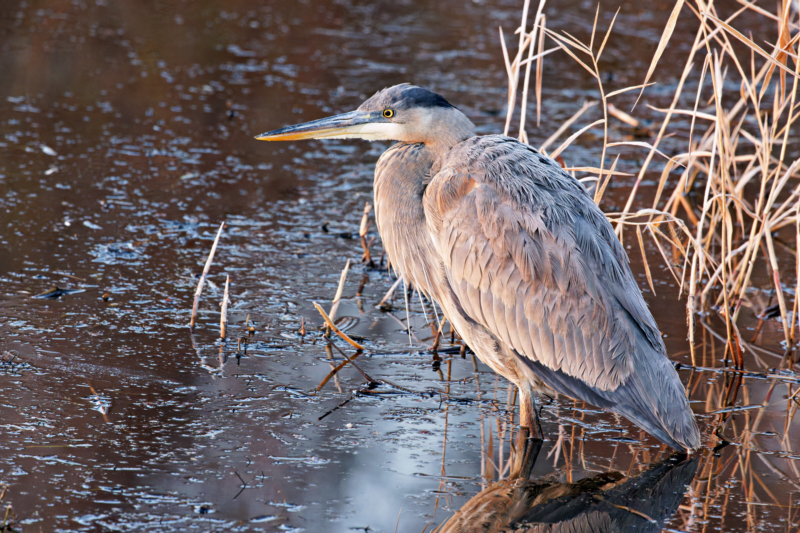I know my last two blog posts have been about the Great Blue Heron, but I wanted to share this image I took of a Great Blue Heron covered in a light coat of frost. I took this photo at the Sequoyah National Wildlife Refuge in Oklahoma. I have made a post before, “Frosty Northern Harrier | How Birds Cope with the Cold,” and in that post I explain how birds adapt to survive cold winter temperatures.

Great Blue Herons are fascinating creatures, and their ability to survive harsh winter temperatures is a testament to their incredible adaptability. Here are some key strategies they use:
Physical Adaptations:
- Feathers: Their dense plumage acts as insulation, trapping warm air close to their bodies. Additionally, they use a special oil gland at the base of their tail to waterproof their feathers, minimizing heat loss when they get wet.
- Countercurrent heat exchange: This clever system in their legs transfers heat from warm arterial blood to cooler venous blood, preventing heat loss to the environment.
- Tucking in: When standing still, they retract their long neck and tuck it against their chest, forming a more compact shape that reduces surface area exposed to the cold.
Behavioral Adaptations:
- Diet flexibility: Unlike many birds that rely on specific food sources that become scarce in winter, Great Blue Herons have a diverse diet. They can switch to hunting amphibians, rodents, small birds, and even insects when fish become hard to find in frozen waters.
- Staying active: Although they appear statuesque while hunting, they actually conserve energy by standing still. However, they remain alert and actively scan for prey, ensuring they catch enough food to maintain their body temperature.
- Seeking open water: They often congregate near warm springs, moving rivers, or other areas where water remains unfrozen, increasing their chances of finding food and staying warm.
Location plays a role:
- Migration: While some populations migrate south for the winter, others have adapted to survive the cold in their northern territories. The further north they live, the more likely they are to have developed strong winter survival strategies.
Understanding these adaptations helps us appreciate the resilience and resourcefulness of these majestic birds. So, the next time you see a Great Blue Heron standing stoically in the winter chill, remember the hidden mechanisms that allow it to thrive in even the harshest conditions.
